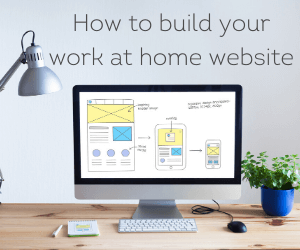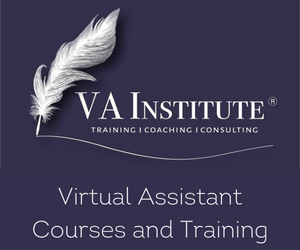Email marketing is one of the most effective tools available for small businesses, especially for those just starting out. At its core, it’s about sending valuable content directly to the inboxes of people who are interested in your products or services. Unlike social media or paid ads, where your message can get lost in the noise, email marketing allows you to build a direct connection with your audience.
For some types of business, this personal approach is crucial. Email marketing doesn’t just help you promote your offerings—it helps you build trust and loyalty with your customers over time. And the best part? You don’t need a big budget to get started. With the right strategy, even the smallest businesses can grow their audience and boost sales through well-crafted email campaigns.
But if you’re new to email marketing, you might feel overwhelmed by where to start. That’s where this guide comes in. We’ll take you through the essentials of email marketing for beginners—from choosing the right platform to building an email list and crafting emails that actually convert. Whether you’re running a side hustle from home or launching a new business, this guide will give you the confidence to kickstart your email marketing journey today.
1. Why Email Marketing is Essential for Small Business Success
For small businesses and startups, every marketing dollar counts. That’s why email marketing is a game-changer—it’s affordable, highly effective, and offers a personal way to communicate with your audience. Here’s why email marketing should be a cornerstone of your business strategy.
Build Stronger Relationships with Your Audience
Email marketing allows you to speak directly to your customers in their inboxes, a place they check regularly. It’s more personal than a social media post or an ad because it feels like a one-on-one conversation. Whether you’re sending a welcome message to a new subscriber or updating customers on your latest product, emails give you the chance to build genuine relationships with your audience. Over time, this trust can turn subscribers into loyal customers.
Cost-Effective Marketing That Fits Your Budget
Unlike other forms of digital marketing—like paid ads or influencer campaigns—email marketing is extremely cost-effective, making it ideal for businesses on a budget. Most email marketing platforms offer free or low-cost plans for smaller email lists, allowing you to grow your list and your business without breaking the bank. You don’t need to spend hundreds on ad space; with email marketing, you can reach your audience for a fraction of the cost and see a higher return on investment (ROI).
Reach Your Audience Directly
Social media algorithms change all the time, and it’s becoming harder to reach your followers organically. With email marketing, you don’t have to worry about algorithms or competing for visibility. Your emails land directly in your subscribers’ inboxes, giving you control over when and how your message is delivered. This ensures your audience sees your content when you want them to.
Measurable Results for Continuous Improvement
One of the biggest advantages of email marketing is its measurability. You can track how many people open your emails, click on links, and take action. This data is invaluable for understanding what works and what doesn’t. It allows you to fine-tune your campaigns over time, improving their effectiveness and maximizing your results. With each email, you can learn more about your audience and what motivates them, allowing you to create better, more tailored content in the future.
Grow Your Business and Increase Sales
At the end of the day, email marketing isn’t just about sending messages—it’s about driving results. Whether your goal is to increase sales, boost website traffic, or promote special offers, a well-executed email campaign can deliver impressive outcomes. By building trust with your audience and staying top of mind, you create opportunities for repeat business and long-term customer loyalty. Plus, with targeted promotions and personalized offers, you can encourage subscribers to take action, boosting your bottom line.
2. Setting Up Your Email Marketing Platform
Before you dive into creating your email marketing campaigns, the first step is to choose the right platform to manage your emails. Good email marketing software will simplify your work, save you time, and ensure that your campaigns are effective and professional. Here’s how to choose and set up your email marketing platform from scratch.
Choosing the Best Email Marketing Platform for Your Business
There are many email marketing platforms available, each with its own set of features. When selecting the best one for your business, consider the following:
- Ease of Use: Look for a platform that is intuitive and easy to navigate. As a small business owner or startup, you likely don’t have time for a steep learning curve.
- Pricing: Many platforms offer free plans with basic features, which can be perfect for small businesses just starting. As your email list grows, you may need to upgrade, but starting with a free plan allows you to test out the platform without a financial commitment.
- Features and Integrations: Different platforms offer various features like email templates, automation, A/B testing, and analytics. Some platforms also integrate with your website, social media, or eCommerce store, allowing you to streamline your marketing efforts.
- Scalability: Consider how the platform will grow with your business. You want a solution that can handle increasing subscribers, advanced segmentation, and more sophisticated campaigns as your business expands.
Some of the most popular platforms for small businesses and startups include:
- ConvertKit: Focuses on simplicity and is ideal for bloggers or content creators.
- MailerLite: With a free plan up to 500 subscribers, MailerLite is a fantastic program with an ethos of keep it simple. Get a $20 credit on your paid account by signing up through this link: https://www.workathomemums.com.au/mailerlite20
- Mailchimp: Known for its user-friendly interface, Mailchimp is a popular choice for beginners, although their free plan is not as good as it used to be due to the removal of some features.
- Constant Contact: Offers excellent customer support and is great for those who need a bit more guidance, however it doesn’t have a free plan.
- Brevo (Formally Sendinblue): Provides automation and SMS features, making it perfect for growing businesses.
Here is a brief comparison of the features on the free plan of these platforms.
| MailerLite | ConvertKit | MailChimp | Brevo | |
| Number of Contacts / Subscribers | 1,000 | 10,000 | 500 | 100,000 |
| Forms and Landing Pages | Y | Y | Y | Forms only |
| Automation / Sequence Builder | Y | 1 basic automation | Basic automation | Y – up to 2000 contacts |
| Audience Segmentation | Y | Y | Basic | Y |
| A/B Testing | Not on free plan | Y | Not on free plan | Not on free plan |
| Drag & Drop Email Editor | Y | Y | Y | Y |
How to Set Up Your Email Marketing Platform
Once you’ve chosen the right platform, it’s time to get started. Here’s a basic guide to setting up your account:
Step 1: Sign Up for an Account
Most platforms will allow you to create a free account to test out the features. During signup, you’ll typically provide basic information about your business, such as your name, email address, and business name.
Step 2: Import or Build Your Email List
If you already have an email list, most platforms will allow you to import it directly from a CSV file or another platform. If you’re starting from scratch, don’t worry—Section 3 will cover how to build your email list.
Step 3: Set Up Your Sender Information
Your sender information is what subscribers will see when they receive your emails. Be sure to set up a professional sender name and email address that reflects your business (e.g., info@yourbusiness.com). Avoid using free email providers like Gmail or Yahoo for your campaigns, as this can affect email deliverability and credibility.
Step 4: Customize Your Email Templates
Most platforms provide pre-designed email templates that you can customize to match your brand. Use these templates to create visually appealing emails without needing design skills. Customize the colours, fonts, and layout to reflect your brand identity.
Step 5: Set Up Welcome and Automated Emails
Automated emails save you time and keep your audience engaged. Start by setting up a welcome email that automatically sends to new subscribers when they join your list. This email can introduce your business, offer a discount, or provide valuable content like a free guide. As your business grows, you can set up more automated emails, like cart abandonment reminders or birthday offers, which we’ll cover in detail in Section 5.
Step 6: Test and Preview Your Emails
Before sending your first campaign, always test and preview your emails to ensure they look great on both desktop and mobile devices. Most email platforms offer this feature, allowing you to see exactly how your email will appear to subscribers.
Integrating Your Email Platform with Your Website and Social Media
To maximize your email marketing efforts, you’ll want to integrate your email platform with your website and social media accounts. Most email marketing platforms provide easy ways to add signup forms to your website and social media pages, allowing visitors to join your email list directly from your online presence. Here’s how you can do it:
- Website Integration: Many platforms offer plugins or HTML code you can easily embed in your website’s header, footer, or blog to capture email subscribers.
- Social Media Integration: Use your platform’s integration features to add an email signup form to your Facebook page or Instagram bio. Not all platforms will have this available in their free plans though.
- eCommerce Integration: If you run an online store, integrate your email platform with your eCommerce platform (such as Shopify or WooCommerce) to collect customer emails at checkout or send personalized follow-up emails after purchases.
Start with a Simple Campaign
Now that you’ve set up your platform, you’re ready to create your first campaign. Start with something simple, like a newsletter or a promotionaloffer. Remember, email marketing is about building relationships over time, so focus on providing value rather than just selling.
3. Building Your Email List from Scratch
Now that you’ve set up your email marketing platform, the next essential step is to build your email list. The success of your email marketing campaigns largely depends on the quality and size of your list. But where do you begin, especially if you don’t have any subscribers yet? In this section, we’ll cover actionable strategies for growing your email list from scratch while staying compliant with legal requirements.
Start with People You Know
Your first subscribers don’t need to be strangers. Start by reaching out to people you already know—friends, family, colleagues, and even customers who have previously expressed interest in your products or services. Let them know you’re launching a newsletter or email campaign and invite them to sign up. This can give you a small but engaged list to kickstart your efforts.
Create Lead Magnets to Encourage Sign-ups
People are more likely to subscribe to your email list if they get something valuable in return. This is where lead magnets come in. A lead magnet is a free resource or incentive that you offer in exchange for someone’s email address. For micro and small businesses, lead magnets don’t have to be complicated or expensive to create. Here are some ideas that work well:
- Discounts and Coupons: Offer a percentage off their first purchase or an exclusive deal for new subscribers.
- Free Guides or eBooks: Create a simple PDF guide related to your business, like “5 Tips for Budget-Friendly Home Decor” or “How to Start a Freelance Career.”
- Checklists or Templates: These work especially well for time-strapped subscribers. Examples could be “A Weekly Meal Prep Checklist” or “A Social Media Content Calendar Template.”
- Free Samples or Demos: If you’re selling products or services, offering a free sample or demo is a great way to entice sign-ups.
- Exclusive Content or Access: For bloggers or content creators, offer exclusive access to premium content, such as tutorials, webinars, or in-depth articles.
Make sure your lead magnet aligns with your audience’s interests and directly relates to your business. This ensures that the people joining your list are genuinely interested in what you offer.
Add Sign-Up Forms to Your Website
One of the most effective ways to grow your email list is by placing sign-up forms strategically throughout your website. Here are the best places to add them:
- Homepage: Include a visible sign-up form or pop-up on your homepage to capture visitors’ attention as soon as they land on your site.
- Blog Posts: If you run a blog, include a sign-up form at the end of each blog post or in the sidebar. You can also insert a call-to-action (CTA) within the blog content, offering your lead magnet.
- About Page: This page is often one of the most visited areas of a website. Adding a sign-up form here can capture the attention of engaged visitors.
- Pop-ups and Slide-ins: Many email marketing platforms offer pop-up or slide-in forms that appear after a user spends a certain amount of time on your website or scrolls down a certain percentage of a page. While pop-ups can be effective, be careful not to overwhelm visitors with too many, not only does it annoy people, it can also have a detrimental effect in you showing up in search results.
Make sure your sign-up forms are easy to find and fill out. Don’t ask for too much information—just a name and email address are usually enough to start. The simpler your form, the more likely people are to complete it.
Leverage Social Media to Grow Your Email List
Your social media platforms are a goldmine for attracting email subscribers. Here are some strategies to integrate social media with your email marketing efforts:
- Add a Sign-Up Link to Your Bio: On platforms like Instagram and Twitter, add a link to your email sign-up form in your bio. You can direct followers to the link in your posts or stories.
- Promote Lead Magnets in Posts: Regularly post about your lead magnet or freebie on social media, explaining how people can benefit from it and encouraging them to sign up for your email list to receive it.
- Run Contests or Giveaways: Contests and giveaways can be a fun and effective way to grow your list. Ask participants to sign up for your email list as a requirement to enter.
- Create a Facebook Page Sign-Up Button: If you have a Facebook business page, you can add a call-to-action button that links directly to your email sign-up form. Facebook allows businesses to add a “Sign Up” button that leads directly to an email opt-in page.
- Use Instagram Stories and Highlights: Instagram Stories are a great way to promote your email list. You can share behind-the-scenes content, announce your lead magnet, or direct followers to your sign-up form. You can also save these Stories as Highlights on your profile for future visibility.
Offline Methods to Build Your Email List
If you run a brick-and-mortar business or attend in-person events, don’t forget about offline opportunities to grow your email list. Here are a few ideas:
- In-Store Sign-Up Forms: If you have a physical location, encourage customers to sign up for your email list at checkout or through a tablet on the counter.
- Event Networking: Collect email addresses at events, fairs, or trade shows. Make sure you clearly explain what subscribers will get by joining your list.
- Business Cards: Include your email sign-up link on your business cards. If you meet someone who’s interested in what you do, they can easily join your list later.
- QR Codes: Create a QR code that links to your sign up page and put it up somewhere visible. People can use their phone camera to take them straight to the form.
Stay Compliant with Email Marketing Laws
As you grow your email list, it’s crucial to ensure that you’re following email marketing laws and best practices. These regulations protect your subscribers’ rights and ensure that your business practices are transparent and trustworthy. Here’s an overview of the most important laws you need to be aware of:
Australia’s Spam Act (2003)
In Australia, email marketing is regulated by the Spam Act 2003, which sets strict guidelines on how businesses can communicate with their audience via email. Non-compliance can result in hefty fines, so it’s essential to understand the rules. Here are the key principles:
- Consent: You must have the recipient’s express or inferred consent to send them marketing emails. Express consent means they have actively agreed to receive your emails (e.g., by signing up for your email list). Inferred consent can occur through an existing business relationship, but it’s always safer to have explicit permission.
- Identify Yourself: Every marketing email you send must clearly identify your business. This includes your name (or your company’s name) and contact details, such as an email address, phone number, or mailing address. The recipient needs to know who is contacting them and how to reach you if needed.
- Unsubscribe Option: Every email must include a functional and easy-to-use unsubscribe option. This link or method must allow recipients to opt out of future emails with one click, and you must process unsubscribe requests promptly—typically within five working days.
- No Misleading Information: Your subject lines and sender details must be accurate and not misleading. Avoid using deceptive headers, sender names, or content to trick recipients into opening your email. This not only violates the law but damages your credibility and trust with subscribers.
Failure to comply with the Spam Act can result in significant penalties, so it’s crucial to ensure all email marketing practices are aligned with the law.
GDPR (General Data Protection Regulation)
If you have customers or subscribers in the European Union, you must comply with GDPR. This means obtaining explicit consent before sending marketing emails, offering an easy opt-out option, and protecting customer data.
CAN-SPAM Act (U.S.)
In the U.S., the CAN-SPAM Act requires that you include an unsubscribe link in every marketing email, don’t use deceptive subject lines, and clearly identify your emails as advertisements if applicable.
Double Opt-In: A Best Practice
To ensure compliance and reduce the risk of sending emails to uninterested recipients, consider using a double opt-in process. This means that after someone submits their email address, they receive a confirmation email asking them to verify their subscription. While not required by law in Australia, double opt-in ensures higher engagement and reduces the likelihood of spam complaints.
Keep Your List Engaged
Once you’ve started building your email list, it’s essential to keep your subscribers engaged. This means sending valuable content consistently and maintaining a regular communication schedule. Offer tips, updates, special offers, or relevant news that your audience will find useful. By nurturing your subscribers, you’ll increase your chances of turning them into loyal customers.
4. Crafting Emails That Convert
Creating great emails is more than just sending out promotional messages. To get the most out of your email marketing, you need to craft emails that grab attention, keep your audience engaged, and encourage them to take action. Whether it’s making a purchase, signing up for a webinar, or simply clicking a link, your emails need to be persuasive and well-designed. Let’s dive into the essential elements that make emails successful.
Mastering the Subject Line
Your email’s subject line is the first thing your audience sees, and it can make or break your open rates. A well-crafted subject line piques curiosity, creates urgency, or promises value, enticing the reader to open the email. Here are a few tips for writing great subject lines:
- Keep it Short and Sweet: Aim for no more than 40-50 characters. Shorter subject lines are more likely to be fully visible on mobile devices, where a large percentage of your audience will be opening emails.
- Create Urgency: Use words that encourage immediate action, such as “Limited Time Offer,” “Last Chance,” or “Don’t Miss Out.”
- Personalization Works: Personalized subject lines can boost open rates. Include the recipient’s name or reference their recent activity, like “Hey Sarah, your free guide is waiting!”
- Ask Questions or Use Emojis: A well-placed question can engage curiosity, like “Are you ready for a home office makeover?” Don’t be afraid to use emojis to make your subject line more visually appealing, but use them sparingly.
- Test Your Subject Lines: Try A/B testing different subject lines to see which ones perform best with your audience. Over time, you’ll learn what resonates most with your subscribers.
Write Engaging Email Copy
Once your subject line has done its job, the email content needs to keep your audience interested. Here’s how to write copy that not only engages but also converts:
- Get to the Point: People have short attention spans, especially when reading emails. Start with the most important information at the top—whether it’s a special offer, announcement, or an important update. Avoid long paragraphs; instead, break up your content into bite-sized chunks for easy reading.
- Use Conversational Language: Write your emails as if you’re having a conversation with your reader. Avoid corporate jargon or overly formal language. Instead, use a friendly, approachable tone that reflects your brand’s personality. This creates a connection with your audience and makes them feel like you’re talking directly to them.
- Highlight the Benefits: Focus on the value your email provides to the recipient. Whether you’re offering a discount, sharing helpful tips, or introducing a new product, clearly explain what’s in it for them. Always prioritize benefits over features. For example, instead of saying “Our shoes are made from high-quality materials,” say “Our shoes keep your feet comfortable all day long.”
- Create a Clear Call-to-Action (CTA): Every email should have a purpose—whether it’s to encourage readers to make a purchase, sign up for an event, or download a resource. Your call-to-action (CTA) should be clear, bold, and easy to follow. Use actionable words like “Shop Now,” “Download the Guide,” or “Claim Your Discount.” Make sure your CTA stands out visually, either with a button or contrasting colours.
Design Emails for Easy Reading
The visual design of your emails is just as important as the content. A well-designed email is not only visually appealing but also easy to navigate, making it more likely that recipients will read through and take action. Here’s how to create well-designed emails:
- Keep the Layout Simple: Use a clean, simple layout that doesn’t overwhelm the reader. Avoid clutter and unnecessary distractions. Focus on having one clear message per email and a single CTA.
- Use High-Quality Images: Images can make your email visually appealing and help convey your message more effectively. Whether you’re showcasing products or illustrating a point, ensure that your images are high quality and properly optimized for fast loading.
- Make It Mobile-Friendly: With over half of all emails being opened on mobile devices, it’s essential to optimize your emails for mobile users. Use responsive email templates that automatically adjust to different screen sizes, and ensure your content, images, and CTAs look great on both desktop and mobile.
- Balance Text and Images: While images are important, make sure your email still conveys its message even if the images don’t load (some email clients block images by default). Use a balance of images and text, and always include alt text for images so recipients can understand the context even without visuals.
- Use Brand Consistency: Your emails should reflect your brand’s identity. This includes using consistent colors, fonts, and logos that align with your website and social media presence. This consistency helps build recognition and trust with your subscribers.
Personalize and Segment Your Emails
Personalization and segmentation are powerful tools for making your emails more relevant and increasing engagement. Personalizing your emails doesn’t just mean adding the recipient’s name—it involves delivering content that’s tailored to their preferences and behaviours. Here’s how to use these techniques effectively:
- Personalize Beyond the Name: Use data you’ve collected to personalize your emails based on the recipient’s preferences, location, purchase history, or browsing behaviour. For example, send product recommendations based on past purchases or special offers based on their interests.
- Segment Your Email List: Not all of your subscribers are the same, so why should they all receive the same emails? By segmenting your list into different groups (e.g., new subscribers, past customers, or VIP clients), you can send more targeted and relevant content. This could include specific product promotions, content tailored to their industry, or special offers for loyal customers.
Best Practices for Timing and Frequency
Knowing when to send your emails is just as important as knowing what to send. Here’s how to optimize your email timing and frequency to maximize engagement:
- Timing Matters: Studies show that certain days and times tend to perform better for email campaigns. While it varies depending on your audience, sending emails on Tuesday, Wednesday, or Thursday mornings typically yields higher open rates. However, don’t hesitate to experiment and see what works best for your specific subscribers.
- Don’t Overwhelm Your Subscribers: Sending too many emails can lead to high unsubscribe rates and email fatigue. Aim for a balance—send enough emails to stay top-of-mind but not so many that you overwhelm your audience. Start with a regular schedule, like a weekly or bi-weekly email, and adjust based on your audience’s response.
Testing and Optimizing Your Emails
Even the best-crafted emails can benefit from testing and optimization. Regularly test different elements of your emails to see what resonates best with your audience. Here’s what to test:
- A/B Testing: Test different versions of your subject lines, CTAs, images, or email layouts to see which gets better results. A/B testing allows you to continuously improve your campaigns based on real data.
- Measure Engagement Metrics: Track important email marketing metrics like open rates, click-through rates (CTR), and conversions. If you notice that your open rates are low, work on improving your subject lines. If your click-through rates are low, try making your CTA more compelling or testing different copy.
- Adjust Based on Data: Use the insights you gather from your metrics and testing to adjust your future email campaigns. Email marketing is a continuous learning process—by testing and optimizing, you’ll ensure that your emails keep improving and delivering better results over time.
Conclusion
Email marketing is one of the most powerful and cost-effective tools at your disposal as a micro or small business owner or startup. It provides you with a direct line to your audience, allowing you to build stronger relationships, promote your products or services, and grow your business without needing a huge marketing budget. With the right strategy in place, email marketing can help you achieve your business goals more effectively than many other marketing channels.
Starting with the basics—choosing the right platform, building your list, and crafting engaging emails—gives you a strong foundation. From there, implementing segmentation and automation allows you to work smarter, delivering personalized content that resonates with your audience. By tracking and optimizing your results, you can continually improve the effectiveness of your campaigns and ensure that your emails are always driving value.
As you grow and evolve your email marketing strategy, remember that consistency, personalization, and providing value are key. Your subscribers want to hear from you—but only if what you’re offering them is relevant, engaging, and helpful. By following the best practices outlined in this guide and avoiding common mistakes, you’ll be well on your way to building an engaged and loyal subscriber base.
If you’re just starting out, don’t be discouraged by the learning curve. Email marketing is a journey, and every campaign gives you an opportunity to learn more about your audience and refine your approach. With time, effort, and attention to detail, you can turn email marketing into a reliable, long-term driver of growth for your business.
Next Steps: Start Your First Campaign Today
Now that you have a complete guide to getting started with email marketing, it’s time to take action! If you haven’t already, sign up for an email marketing platform, build your first sign-up form, and start collecting email addresses. Whether it’s a welcome email, a promotional offer, or a newsletter, your first email campaign is just the beginning of your journey to mastering email marketing.
Remember, small steps lead to big results. Start small, keep improving, and before you know it, email marketing will be an essential part of your business’s success.
If you want to take your email marketing to the next level, head to our article: Beyond the Basics: How to Optimize and Scale Your Email Marketing.






